Asakusa's Sanja Festival 2025: Dates, Highlights, and Access

Sanja Matsuri, one of Tokyo's three greatest festivals, celebrates the three founders of Sensoji Temple and is held every year around mid-May. In 2025, the Sanja Festival will be held May 16 - 18. Read on to learn festival highlights and how to get to the venue.
Sanja Matsuri: A Festival Celebrating the Founders of Sensoji Temple
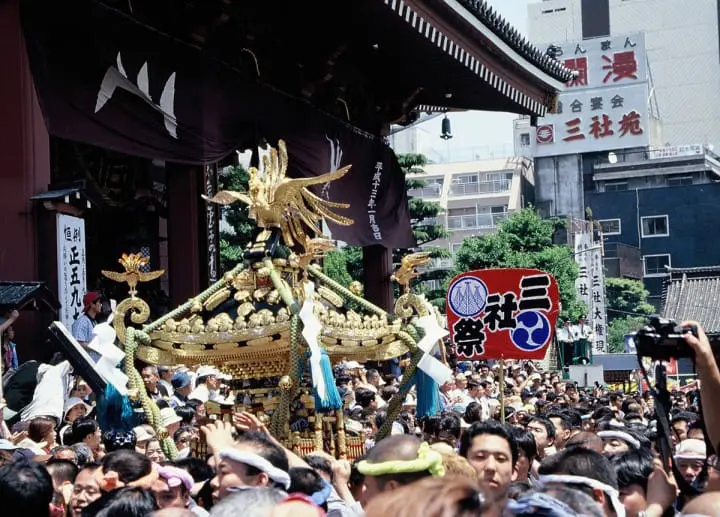
© Tokyo Convention and Visitors Bureau
The Sanja Festival, or Sanja Matsuri, is one of Tokyo's three largest Shinto festivals. Held every year around mid-May, the Sanja Festival celebrates the three founders of Sensoji Temple, who are enshrined at Asakusa Shrine in Asakusa, Tokyo.
In 2025, the Sanja Festival will be held for three days from May 16 to May 18.
The major highlight of the Sanja Festival is the procession of portable shrines (mikoshi) on the second and third days. On the second day, you can see nearly one hundred portable shrines gathering from surrounding towns, making their way toward Asakusa Shrine.
On the third day, three massive portable shrines depart from Asakusa Shrine and are paraded through nearby areas. These three mikoshi shrines carry the spirits of the three temple founders around the district.
Asakusa's Sanja Festival: Features and Highlights
1. The Origin of the Sanja Matsuri Festival
2. Sanja Festival 2024 Dates
3. Access
4. Highlights of the Sanja Matsuri Festival
5. How to Enjoy the Sanja Matsuri Festival
The Origin of Sanja Matsuri Festival
Asakusa Shrine is said to have been built nearly 1,400 years ago.
Shrines in Japan usually enshrine Japanese gods, but Asakusa Shrine enshrines Hamanari and Takenari Hinokuma, the two brothers who found the holy statue that became the deity enshrined at Sensoji Temple and Nakatomo Hajinoatai, an intellectual of the time who realized the importance of their discovery (*please note there are various versions of this story).
Therefore, Asakusa Shrine is also referred to as Sanja (three shrines), and the festivities held here are called Sanja Matsuri.
Read also
Sanja Festival 2024 Schedule
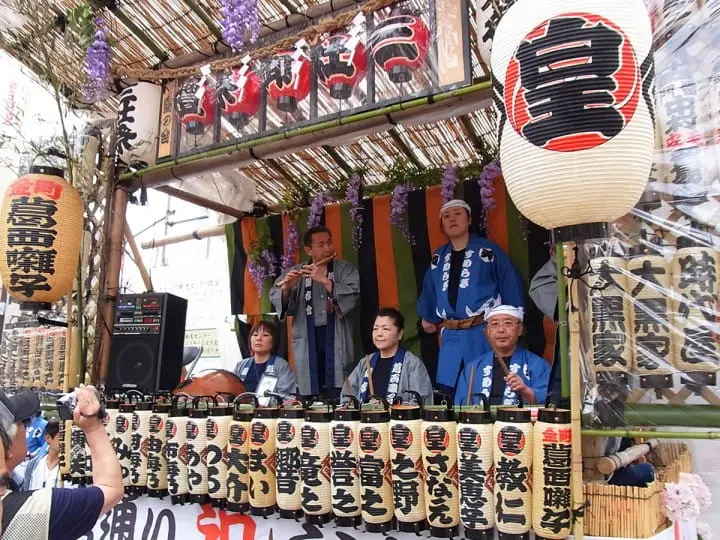
© Tokyo Convention and Visitors Bureau
In 2025, the Sanja Festival will be held from May 16 to May 18.
The events of the festival vary by day. Furthermore, the second and third days are when the festival reaches its peak. For more details, please check the official website of the Sanja Matsuri Festival.
Location and Directions to Sanja Matsuri
Sanja Matsuri is held at Asakusa Shrine and its surrounding area. Asakusa Shrine is right next to Sensoji Temple.
The closest station is Asakusa Station on the Tokyo Metro Ginza Line and the Toei Subway Asakusa Line. It is advised to go early to avoid crowds around the stations and on the trains on the day of the festival.
Read also
Highlights of Sanja Matsuri
The following is an introduction to the grand parade on the first day and the Mikoshi Shrine Town Association Parade on the second day.
Grand Parade: Day 1 (Starting at 13:00)
On the first day, you can see a procession of people wearing historical outfits walking throughout the town called the daigyoretsu (grand parade). Asakusa becomes filled with festivity as geisha, members of the ohayashi yatai (*1) and dancers adorned in ceremonial Binzasara dancewear fill the streets.
The parade starts near Sensoji Temple at the Tokyo Asakusa Association (an association of geisha and ryotei restaurants). It makes its way through the Kaminarimon Gate, Nakamise-dori shopping street, and the Rokku entertainment district before reaching Asakusa Shrine.
In addition, the traditional Binzasara Dance passed down for generations at Asakusa Shrine is performed on the shrine grounds.
*1 Ohayashi yatai: a group of festival musicians (ohayashi) and people who draw the decorative carts.
Tokyo Asakusa Association
Location: Tokyo, Taito, Asakusa 3-33-5 Google Map
Mikoshi Shrine Town Association Parade: Day 2 (Starting at 12:00)
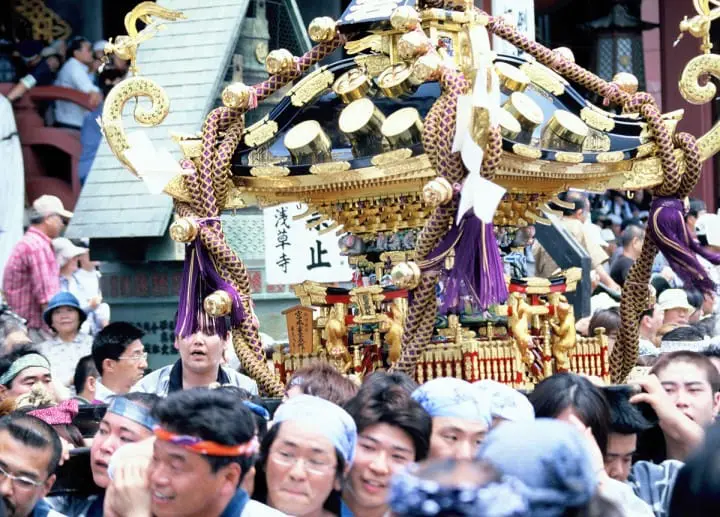
© Tokyo Convention and Visitors Bureau
On the second day, nearly one hundred portable mikoshi shrines from 44 neighboring towns around Asakusa Shrine are brought out. You will hear people shouting "wasshoi wasshoi" "oisa oisa" as they carry the shrine energetically. This procession is called the Chonai Mikoshi Rengou Togyo in Japanese.
During the procession, check out the movement called the tamafuri, where the participants carrying the portable shrines shake them up, down, left, and right.
Historically, during Japanese festivals, the tamafuri movement was believed to bring a good harvest, have a good catch at sea, and ward away illnesses. The tamafuri at the Sanja Festival is thought to be quite powerful.
Honsha Mikoshi Kakuchou Togyo: Day 3

© Public interest foundation, Tokyo Convention & Visitors Bureau
The festival's main event occurs on the third day, where three mikoshi shrines are transported from Asakusa Shrine and are paraded around the nearby towns. This event is called the Honsha Mikoshi Kakuchou Togyo.
The mikoshi shrine on this day is significantly larger than the mikoshi shrines on the second day. The three mikoshi shrine depart Asakusa Shrine at 6:00 and take three different routes. After walking around the three areas, it returns to Asakusa Shrine. The mikoshi shrine is expected to return to Asakusa Shrine around 18:00-19:00.
On this day, the path from the Kaminarimon Gate to Umamichi-dori street is called the omatsuri hiroba (festival square). Several portable shrines from the second day are displayed here. If you are in Asakusa on this day, you will be able to see the portable shrines from both days two and three.
How to Enjoy the Sanja Matsuri Festival
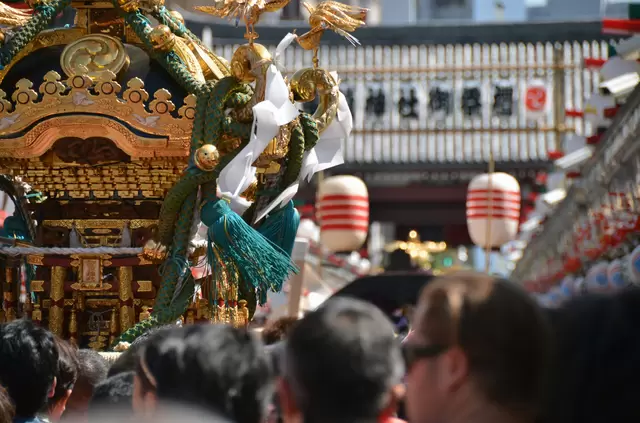
One of the charms of the Sanja Matsuri is that you can enjoy it in different ways depending on the viewing spots!
On the second and third days, which are the climax of the festival, Kaminarimon Street becomes very crowded with spectators and shrine bearers. Be mindful of people and shrine movements to enjoy the festival safely.
Additionally, concerning restroom facilities at the festival, some convenience stores and supermarkets around the venue may prohibit the use of their toilets, so it is advisable to plan your time accordingly.
Hotels near Asakusa Shrine
FAQ
What is the Sanja Festival in Japan?
The Sanja Matsuri, also known as the Sanja Festival, is one of Tokyo's major traditional festivals held in Asakusa. It is dedicated to the three founders of Sensoji Temple: Hinokuma Hamanari, Hinokuma Takenari, and Hajino Nakatomo. The festival takes place in mid-May and features lively processions, traditional music and dance performances, food stalls, and portable shrines called mikoshi being carried through the streets. Participants wear traditional festival clothing, and the atmosphere is vibrant and celebratory. The Sanja Matsuri is known for its energetic and lively nature, drawing large crowds of both locals and tourists who come to witness this colorful and festive event.
Is Sanja Matsuri worth visiting?
The Sanja Matsuri in Tokyo is a vibrant traditional festival honoring the founders of Sensoji Temple, featuring lively processions, music, dances, and portable shrines. With a rich cultural experience and vibrant atmosphere, it offers photography opportunities and a chance to immerse in local traditions. However, the festival can be crowded and requires navigating through the bustling streets. If you appreciate Japanese culture, energetic events, and are willing to embrace the crowds, the Sanja Matsuri is worth visiting for a memorable glimpse into Japan's heritage and festive celebrations.
What time is Sanja Matsuri?
The Sanja Matsuri usually takes place over a weekend in mid to late May. The festival typically spans three days, with the main events concentrated on the second and third days. The festival dates in 2024 are May 17 (Friday) - 19 (Sunday). On the first day at 13:00, a large parade of portable shrines begins at Asakusa Shrine and is worth viewing. Around 14:20 and 15:00, there is a performance of Binzasara dances. On the second day (Saturday), 100 portable shrines depart at around 12:30 from shrines in the surrounding districts; they form smaller parades, and you can hear the participants' chants around all the streets in Asakusa. On the third day (Sunday), the great parade of the three main portable shrines from Asakusa Shrine starts at 6:00 AM; during the day, you can spot them around Sensoji Temple and its gates, including Kaminarimon. The portable shrines return to Asakusa Shrine in the evening, at 20:00. If you visit the area around Sensoji Temple on May 19, you can't miss the festival.
What are the three great festivals in Japan?
The "Three Great Festivals of Japan" consist of Gion Matsuri in Kyoto, Tenjin Matsuri in Osaka, and Sanja Matsuri in Tokyo. Gion Matsuri, held in July, showcases floats and cultural performances in Kyoto. Tenjin Matsuri, also in July, features boat processions in Osaka. Sanja Matsuri, held in May, honors Sensoji Temple founders in Tokyo with lively processions and traditional festivities. These festivals are revered for their historical significance, cultural richness, and festive atmospheres, drawing both local attendees and international visitors seeking to immerse themselves in Japan's vibrant traditions and celebrations.
Read also
*The transfer times and fees are based on the information provided by the official website. Please understand that the provided information is subject to change.
This is the official account of MATCHA's editorial department. Our articles feature useful travel information for visitors to Japan, from how-to guides to recommended places to visit.











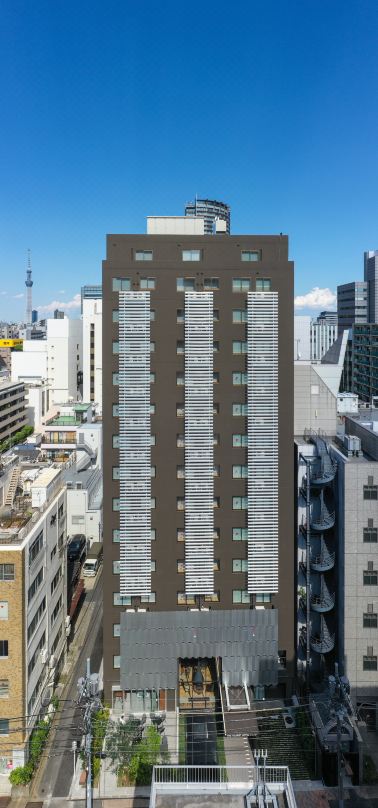






































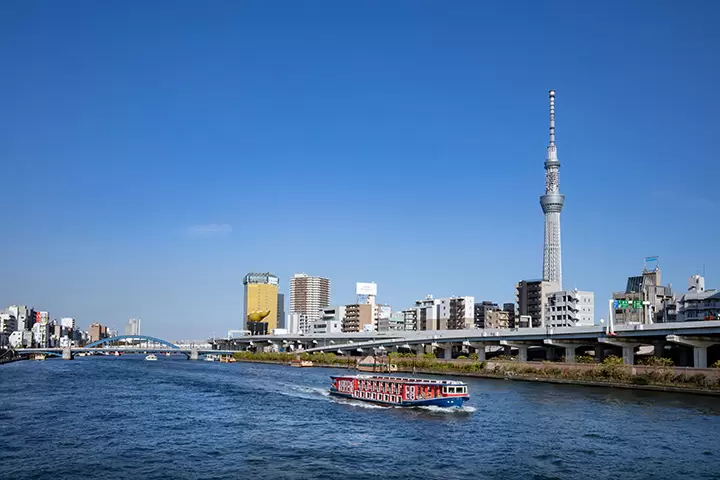


![[Just a short distance from Nagoya] Popular Taiwanese YouTuber Alan tours Aichi, Tokoname!](https://resources.matcha-jp.com/resize/720x2000/2026/01/08-255181.webp)
